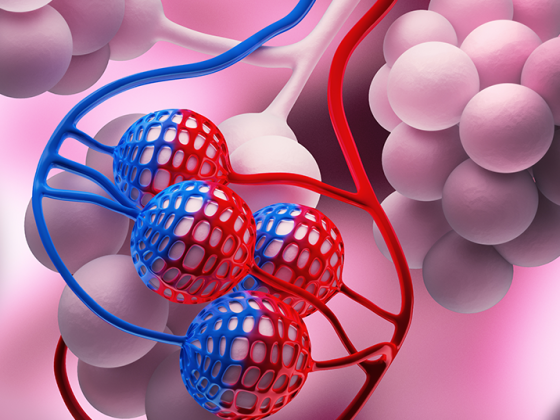Spinal muscular atrophy type 1 (SMA1) is a congenital neurological disorder with severe muscle weakness and wasting (muscle atrophy). Untreated, affected children barely reach the age of three. However, treatment options have become available in the last few years that offer great hope. And rightly so, as has now been shown once again by the European phase 3 study “STR1VE-EU” [1], which evaluated the efficacy and safety of the drug onasemnogen abeparvovec.
Spinal muscular atrophy type 1 (SMA1) usually becomes symptomatic in the neonatal period. If left untreated, infants usually do not reach any of the developmental milestones such as head control, sitting freely, or crawling and walking. Because of the weakness of the swallowing muscles, complete oral nutrition is usually impossible, so tube feeding is also required. If left untreated, most children die in the first two years of life from respiratory muscle failure or respiratory infections. The cause of SMA type 1 is an autosomal recessive gene mutation (“loss-of-function” gene mutation), which leads to a loss of function in the spinal cord of the nerve pathways leading to the muscles (2nd motoneuron), so that the muscle cells do not receive any nerve signals. The “survival motor neuron-1” (SMN-1) gene on chromosome 5 is affected. The SMN-1 gene codes for the SMN protein, which is necessary for the survival and function of motor neurons.
The multicenter, open-label phase 3 study “STR1VE-EU” [1] evaluated gene replacement therapy with the drug onasemnogen abeparvovec (Zolgensma®), which has been approved in Germany since 2020. The preparation is administered once as an intravenous infusion, molecularly modified viruses thereby introduce the functional human SMN gene into the cell nuclei (vector-based gene therapy) so that the correct SMN protein can then be formed. The STR1VE-EU trial evaluated efficacy and safety; inclusion criteria were broader than in the STR1VE-US trial (thus, more severely ill infants were eligible). Nine centers (hospitals and university clinics) in Italy, UK, Belgium and France participated. From August 2018 to September 2020, 41 children younger than six months (180 days) with SMA type-1 were screened, and 33/34 completed the study. The median age at infusion was 4.1 months (IQR 3.0 to 5.2). During the outpatient follow-up period, weekly examinations were performed for four weeks (starting on day 7 after infusion), followed by controls once a month until the end of the study. The primary outcome was the children’s ability to sit freely for at least ten seconds by 18 months of age (as defined by WHO / “Multicentre Growth Reference Study”). Treatment efficacy was compared with natural history in the Pediatric Neuromuscular Clinical Research (“PNCR”) cohort.
14/32 children (44%) met the primary endpoint by the last follow-up visit – versus 0/23 untreated children in the PNCR cohort (p<0.0001). One child had died of hypoxia in the setting of a respiratory infection independent of study. 31/32 of treated children (97%) survived without supportive ventilation for 14 months versus 6/23 PNCR children (26%; p<0.0001). 32/33 children had at least one adverse event and 6/33 (18%) had adverse events classified as severe and related to study drug. The most common adverse events were fever (67%), upper respiratory tract infections (33%), and liver enzyme elevation (27%).
“In contrast to the U.S. study, which excluded infants with initial ventilation or tube feeding, the EU study also included infants with sometimes severe symptomatic SMA type 1,” explained Professor Christine Klein, Past-President of the DGN. “The drug nevertheless showed good efficacy overall, with developmental milestones achieved by most children. During the course of the study, nearly 90% did not require tube feeding and more than 90% remained without supportive ventilation.” The risk-benefit profile could also be described as favorable, side effects were well managed, and there were no safety concerns that would have required study termination. Further studies now need to monitor the long-term effect and safety.
Source: German Society for Neurology
Literature
[1] Mercuri E, Muntoni F, Baranello G et al. Onasemnogene abeparvovec gene therapy for symptomatic infantile-onset spinal muscular atrophy type 1 (STR1VE-EU): an open-label, single-arm, multicentre, phase 3 trial. Lancet Neurol 2021 Oct;20 (10): 832-841 doi: 10.1016/S1474-4422(21)00251-9.











